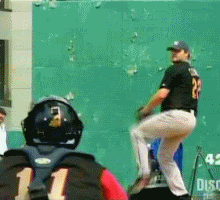Some pitchers throw a "low rise" within the NCAA strike zone. I believe Ricketts is/was one.
I think the low rise is one of the best pitches thrown! Why? Because many batters think it's going to drop more than it does, thus they lay off of it, but it ends up being a strike.




